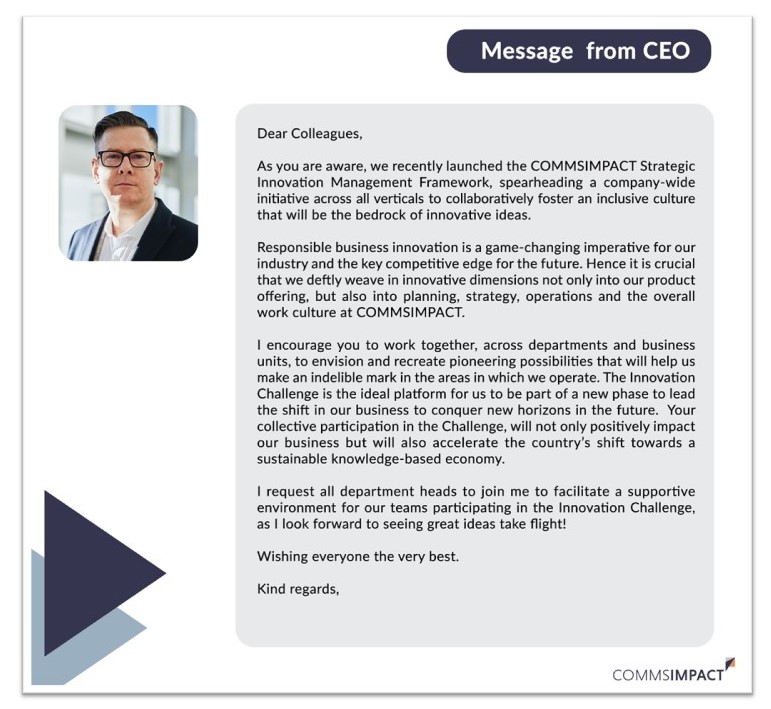Effective communication is the foundation of every productive relationship, strengthening engagement between leadership and employees as well as inter-departmental relationships. Today’s workforce expects leaders to be good communicators, offer transparency and blaze the path.
How can internal communications support our leaders to communicate better?
If we accept that the leader’s job is to inspire, influence and support the organisation’s collective responsibility to create a better future for the company, then what are the keys to supporting leaders to communicate effectively?
1. Planning and selecting the topics for monthly cascade.
The critical topics that perennially demand leadership endorsement are organisational vision and mission, structure and hierarchy, financial results, company milestones and corporate culture. These are topics which wield extraordinary influence across an organisation.
Another direction of thought would be to think of issues and information in the grey zone which can be clarified through a message from the top. Are there culture issues or issues with accountability and decision making? What are the issues which needs a push from leadership?
These themes when taken charge of and communicated effectively will present themselves as strong examples of leveraging leadership to further organisational goals.
2. Be quick in communicating about matters at hand.
Cut the chase and communicate with precision and clarity at the right time. This includes not communicating too early and not too late as well.
Many organisations would be undergoing change at the moment, restructuring for improved efficiencies. Take charge and communicate clearly at regular intervals to prevent the communication from degenerating into one of the most dreaded and anticipated narratives of fear. Employees prefer to know the truth rather than be presented with sanitised versions of truth prolonging insight into the upcoming challenges of the future.
3. Stick to the discourse of inclusivity and openness at all times.
Let’s say we are announcing organisational restructure. Is there any way to make this tough subject rational or reduce heightened anxieties at the very best?
By placing the communication within the context of the need ‘for optimising resources for the new strategic direction or placing resources in the right positions to deliver on the new strategy’, it is grounded in the rationale of business criticality to stay relevant in a shifting market. Moreover, it moves away from de-valuing employees and their valued contributions and sheds the notoriety often accorded to any narrative linked to organisational restructure.
4. Be empathetic.
“People do not care how much you know until they know how much you care”, says an old axiom. Whatever be the topic of the communication, let empathy seep through the thoughts, trickle through every word and drench the communication from top to bottom. Such an approach ensures that the leader is not seen as an isolated figure but is portrayed as someone with vision who speaks to a collective aspiration.
5. Call for collaboration.
Seek contribution to challenges, suggestions to improve efficiency, demonstrate not the intent to dominate but the will to drive collaborative, affirmative action.
SAMPLE LEADERSHIP MESSSAGE

Need a hand with internal communications?
We help with internal communication strategy, content planning, content development for various internal channels like intranet, newsletters, C Suite communication, HR messages, employee communication and internal campaigns. Outsource your internal communications and save time, money and get access to professional talent in the field. For internal communication outsourcing, please reach out to:





